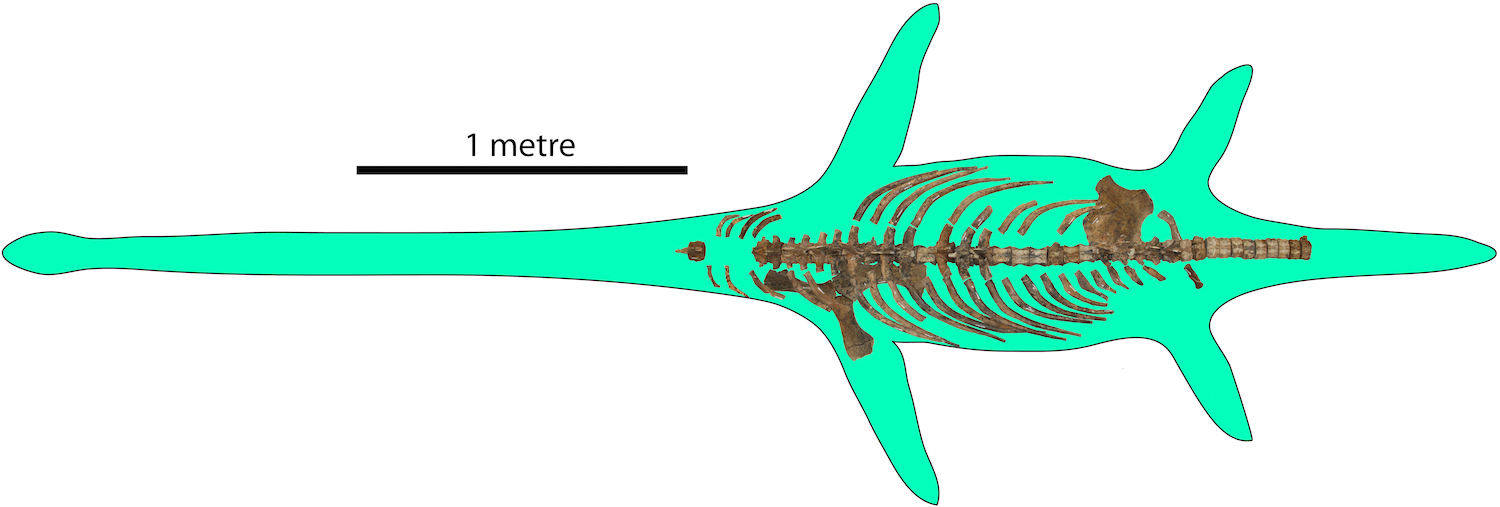Car-Size 'Loch-Ness Monster' Was Runt of the Litter

CALGARY, Alberta — An ancient sea monster the size of a car might sound like a behemoth, but it was quite small compared with its ginormous cousins, some of which reached bus lengths, new research finds.
The 76-million-year-old plesiosaur— a Loch Ness monster look-alike that had four flippers and lived during the dinosaur age — was found in 2009 in the southeastern corner of Alberta, Canada.
It's unclear whether the reptile is a newfound species, but researchers are sure of one thing: "This fossil represents the most complete plesiosaur specimen ever found in the Dinosaur Park Formation of Alberta – a rock unit that is much better known for its rich assemblage of dinosaurs," said study lead researcher James Campbell, a doctoral student in the Department of Biological Sciences at the University of Calgary in Canada. [Photos: Uncovering One of the Largest Plesiosaurs on Record]
It's difficult to say exactly how big the beast was, as researchers found some, but not all of the creature's fossilized bones. Luckily, telltale clues on the bones revealed that the creature belonged to Elasmosauridae, a plesiosaur family with the longest necks of any plesiosaur group, a feature that likely helped these animals ambush schools of fish, Campbell told Live Science.
By comparing the creature's proportions with those of other Elasmosauridae plesiosaurs, the researchers concluded the reptile would have measured between 13 feet and 16 feet (4 and 5 meters) long when it was alive, Campbell said.
Its bone structure revealed the leviathan wasn't yet fully grown, meaning it could have gotten slightly longer had it lived into adulthood, Campbell noted. Even so, it was still a pip-squeak compared to ocean-dwelling plesiosaurs, some of which reached nearly 50 feet (15 m) in length.
In contrast, this plesiosaur likely lived in rivers and estuaries. Other fossils of small elasmosaurids have been unearthed in Dinosaur Park Formation, indicating that "these individuals may belong to a small-bodied elasmosaurid species that was adapted to a nonmarine existence," Campbell said. "However, this interpretation is tentative and is part of an ongoing study."
Sign up for the Live Science daily newsletter now
Get the world’s most fascinating discoveries delivered straight to your inbox.
Still, being small had its advantages. A bus-size plesiosaur would find it challenging to navigate the narrow channels of a river, so perhaps these "tiny" plesiosaurs benefited from their diminutive size, Campbell said.
The research, which has yet to be published in a peer-reviewed journal, was presented Aug. 23 here at the 2017 Society of Vertebrate Paleontology meeting.
Original article on Live Science.

Laura is the archaeology and Life's Little Mysteries editor at Live Science. She also reports on general science, including paleontology. Her work has appeared in The New York Times, Scholastic, Popular Science and Spectrum, a site on autism research. She has won multiple awards from the Society of Professional Journalists and the Washington Newspaper Publishers Association for her reporting at a weekly newspaper near Seattle. Laura holds a bachelor's degree in English literature and psychology from Washington University in St. Louis and a master's degree in science writing from NYU.










